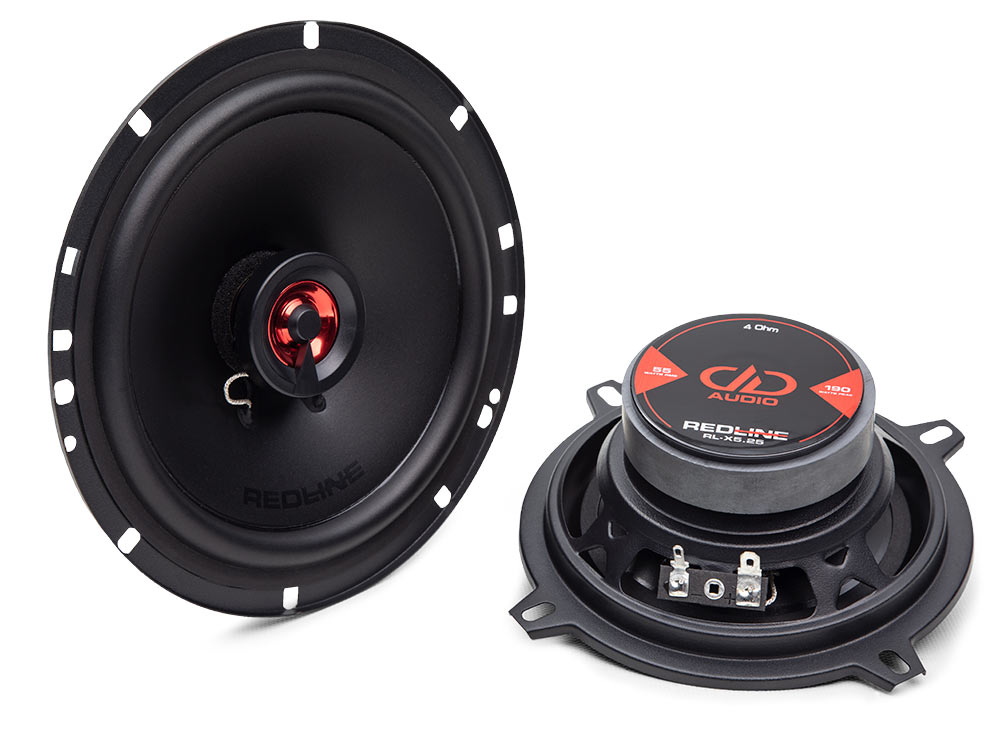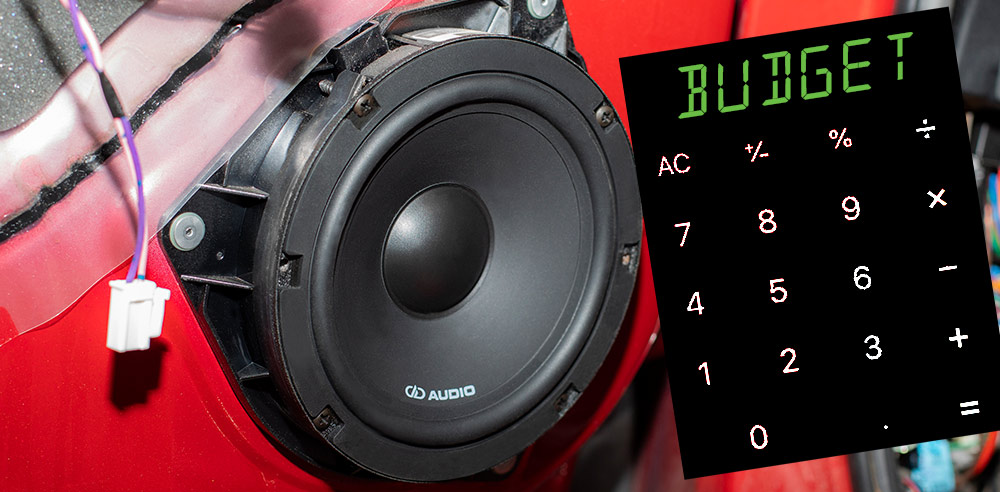
Car Speakers Buying Guide
Choosing the right speakers for your vehicle.
New speakers are a great way to Upgrade Your Sound™ and improve your daily commute. If you’re a first-time car audio shopper wanting to replace old, worn out speakers or improve the sound in your new ride, the end game is always to turn the interior of your vehicle into a soundstage worthy of whatever entertainment makes your ride more enjoyable. Due to the complexity of today’s factory installed systems the task of revamping your mobile audio system can become frustrating enough to make you want to give up before you begin. We get it, and hopefully this car speakers buying guide will help you choose the right speakers for your car and we can help get you over the first bump in the road to better sound.
Things to consider when buying new car speakers:
What Speaker size do I need?
What is my budget for new speakers?
What type power and how much of it do speakers need?
What types of speakers do I need?

SPEAKER SIZE:
Speakers are not a one size fits all situation. In fact, DD AUDIO® offers speakers ranging from a pretty tiny 13mm tweeter to a massive 21” subwoofer. So to get started we need to determine what size of speaker fits your application. When you’re doing a factory upgrade there are several websites out there that will allow you to plug in your make and model and they’ll suggest the most common speaker sizes for your vehicle, and they’re right most of the time. However, the very best way to be totally sure of what size you need will always be to access the speaker and physically measure it. The speaker size is dictated by the diameter of the cone, or in the case of an oval speaker by the width and height of the cone. Armed with your measurements you will be able to easily determine what size is needed for your vehicle based on the sizes offered by the manufacturer.

NEW SPEAKER BUDGET:
The cheapest speakers aren’t always the worst, and the most expensive speakers aren’t always the best. It all depends on your application. Establishing your true intent with a speaker upgrade is the best way to establish a proper budget and come out the other side of this experience feeling satisfied. You want to avoid paying for performance features you’ll never take advantage of, or spending less only to find out you don’t have a path to upgrade down the road. If your only goal is to replace a busted factory speaker, keeping it simple with an entry level coaxial will most likely be the best bang for your buck. If beyond basic is where you want to take your system keep in mind things like any additional installation labor for custom mounting speakers will add to the overall cost of the upgrade. If you intend to have a higher powered system installed you will also need to account for additional products that will be needed to allow the speakers to properly do their job like sound deadener or an aftermarket amplifier.

SYSTEM POWER:
Your system has to have some type of amplification to power your speakers. The amount of amplifier power you have available will determine what type of speaker will perform the best or you. Power usually comes from one the following sources: Factory Installed Amplifier, Aftermarket Head Unit, or Aftermarket Amplifier.
- Factory Installed Amplifier: Factory installed amplifiers are generally designed with just enough power to push the matched factory installed speakers. While those power levels are perfect for driving some highly efficient, yet usually lackluster, factory speakers, most aftermarket speakers will require a little more power to realize their full potential. So when selecting aftermarket speakers for this application we suggest looking for lower power handling models with higher efficiency ratings to achieve the best performance. If you decide a higher performance aftermarket model is what you would like to invest in, keep in mind while you will experience a clearer and better overall sound, your system will generally not be instantly louder. In fact, you may notice a decrease in bass response and overall loudness compared to the factory speakers. This is because higher performance aftermarket speakers are designed to have more power handling which in turn makes them slightly less efficient. Our E Series speakers work very well on most factory installed amplifiers.
- Aftermarket Head Unit: Power wise, most aftermarket head units are only going to offer a small wattage upgrade compared to a factory installed amplifier. This means your new speakers will play a little louder than if they were on a factory head unit, but they still might not be able to really perform at their peak levels. But depending on what your goals are this might be the perfect performance level for you. Beyond the slight uptick in volume you will generally have more advanced crossover and EQ functions when using an aftermarket head unit that allows you to better tune your system and achieve an overall superior sound compared to what you’re capable of with a standard factory installed radio. With the additional power and sound control both our E Series and D Series speakers would be great options for use with an aftermarket headunit.
- Aftermarket Amplifier: If you already have an aftermarket amplifier or are planning on adding one, your speaker choices are much more open. Even a small 65 watt per channel amplifier will provide over twice the usable power of a factory installed amplifier. This extra power is just what it takes when you really want to increase the loudness of your system while keeping the audio clean and clear. When adding speakers to an aftermarket amplifier you will need to first determine the rated power of the amplifier then look for speakers that have an RMS rating close to the amp’s rated power. With a properly matched aftermarket amplifier any of our speakers will be at your disposal without concerning yourself about underperformance from underpower.

TYPES OF SPEAKERS:
All speakers work in the same basic manner and do the same basic job, which is to convert electric energy into sound. But, once you get past the basics you find there are several different types of speakers that lend themselves to different specific jobs. Here are three of the most common types of speakers you’ll find in your audio quest.

- Coaxial speakers: Coaxials are really two or more speakers that have been manufactured to be installed as one full range speaker. They generally consist of a midrange woofer with a high range tweeter or tweeters installed on a post that extends from the magnet of the speaker. These speakers are generally quite easy to install, cost effective, and efficient; efficient meaning they do not require heaps of power to achieve desired volume output. Speakers in our line up that would fit this profile are the RL coax’s, DX coax’s, and VO-XN’s.

- Component Systems: Components will often be referred to as component sets or separates. These systems are typically a midrange woofer and a high range tweeter like the coaxial only they are manufactured to be installed in separate locations while still giving you a full range sound. They also commonly include separate crossovers that are matched to the speakers to offer the optimal fidelity. Component systems offer the ability to locate the speakers where they will have the best sound for your vehicle’s interior and the upgraded crossover offers better sound and protection for your speakers compared to coaxials. For component systems you will need to consider the more difficult installation due to mounting and wiring being more complex which will increase your installation cost. Component systems are also commonly installed with aftermarket amplifier power which will increase the output and control of the system. Component System examples we offer are the RL_C6.5, DC6.5a, CC6.5a.

- Pro Audio Speakers: Also known as PA speakers, are designed to be highly efficient in order to tackle the challenge of filling a big or noisy space with sound using relatively small speakers. Some good examples of these types of spaces are boats, motorcycles, and ATVs. All of these mobile environments have to fight things like wide open spaces, engine noise, and wind noise just so the listener can hear their tunes. The catch with PA speakers is to gain the efficiency needed to play at higher volume levels they sacrifice their ability to be full range speakers. This means to get a full range sound you will need multiple speakers and aftermarket amplification which will increase the complexity of the installation, so we would only recommend this style of speaker when you know a coaxial or standard component system isn’t going to provide the volume level you need.
Hopefully this Car Speakers Buying Guide provides some clarity or at least a base for further research. It’s easy to get intimidated by all the options and technical jargon available on the internet so our goal is to make it easier for everyone out there to enjoy a slice of our passion for car audio!
Other Products: Amplifiers, Subwoofers and Enclosures!
Find a dealer near you to buy local!